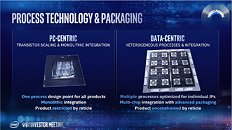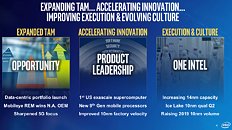
Intel Drivers Reveal 400, 495 Series Chipsets for Comet Lake, Ice Lake - New Year, New Socket, Same 14 nm Process
Data extracted from Intel's latest Server Chipset Driver (10.1.18010.8141) mentions support for new chipsets, which will bring about compatibility for the company's upcoming Comet Lake chips. Comet Lake, if you remember, is Intel's latest gasp in the 14 nm process for CPUs, and should bring up to 10 cores to the consumer segment. The increase in maximum number of cores will naturally be Intel's justification for the need for new chipsets and sockets, due to "electrical incompatibilities" and increased requirements in the power delivery subsystem.
If you're looking for the latest and greatest changes to Intel's architecture and manufacturing process, you'll have to wait for Ice Lake, for which the 495 series chipset brings compatibility. But for that one, you'll have to wait until 2020. Let's see what AMD's Ryzen 2 brings to the table against Intel's current (and up to 10 nm Comet Lake) offerings. Even excluding platform longevity, AMD's architecture and core density really has been giving Intel a run for its money.
If you're looking for the latest and greatest changes to Intel's architecture and manufacturing process, you'll have to wait for Ice Lake, for which the 495 series chipset brings compatibility. But for that one, you'll have to wait until 2020. Let's see what AMD's Ryzen 2 brings to the table against Intel's current (and up to 10 nm Comet Lake) offerings. Even excluding platform longevity, AMD's architecture and core density really has been giving Intel a run for its money.










